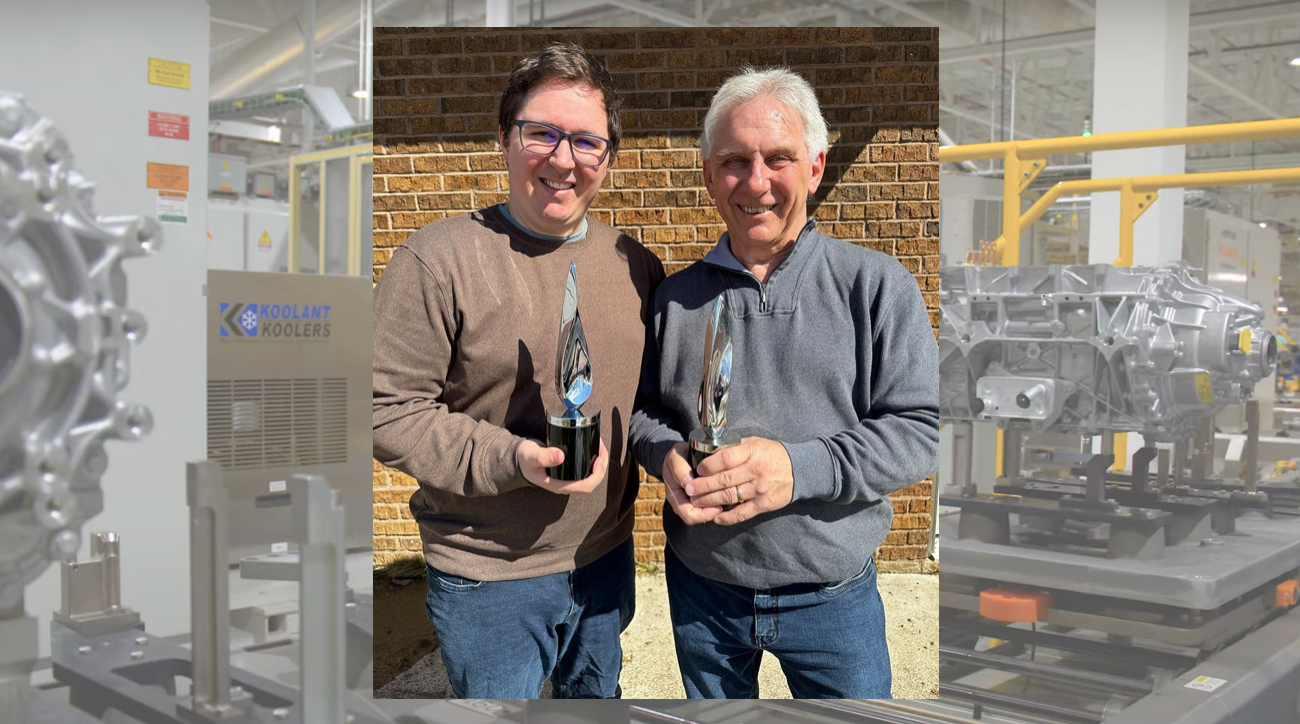Walter LaPlante’s love of technology and cars comes from his dad, Lou, a 30-year veteran of Ford Motor Company. In 2003, the elder LaPlante won the Henry Ford Technology Award for the 3D Robotic Guided Vision system he invented. Walter describes his dad’s 3D Robotic Guided Vision system as “a robot with eyes” that picks up a part and places it in reach of another robot that docks it to the engine. Today, the technology is still used in the assembly process.
In his role as the controls and industrial connectivity supervisor for stamping engineering at Ford, Walter was inspired by a video on the Discovery Channel about his dad’s achievements. He had watched his dad start out as a machine repairman who worked his way up to engineering, earning one of Ford’s top honors in the process.
Seventeen years after his dad earned the award, Walter was bestowed with the same prestigious honor for leading the creation of the Mobile AI Vision System (MAIVS). The technology uses tiny cameras and artificial intelligence to spot manufacturing defects in real time on the assembly line. MAIVS contributes to improvements in quality and efficiency with a common palm-sized device used all over the world: a smartphone. Here’s how it works.
The internet of things meets AI
There is a collection of acronyms within the initials of MAIVS, and they each play an important role. The first is IoT, or the internet of things. Software giant Oracle says IoT is a network of physical objects that are embedded with sensors, software, and other technologies to connect and exchange data with other devices and systems over the internet. Related, MQTT, (short for Message Queuing Telemetry Transport) is a standard messaging protocol for IoT known for its reliability and small internet footprint. Add that soup of letters to a smartphone and AI (artificial intelligence) and you end up with MAIVS.
MAIVS offers a format to interact with different devices. In his role in manufacturing technology development, Walter benchmarks technologies constantly to find ways to improve processes. Seeking something lightweight and mobile, Walter and a small team created a smartphone-based ecosystem that wouldn’t require large robots. The team found a way to communicate a straightforward pass/fail message about specific parts coming down the line, catching defects as early as possible.
“The camera goes inside with the help of a robot, and it points to something we want to look at, especially high warranty issues,” LaPlante explains. “It will take a picture and infer with the artificial intelligence. Based on that inference, it will communicate pass or fail back to the operator.”
If it passes, the build moves on down the line. If one or more of them fail, there’s a chance to correct it.
The project was initially piloted in Chicago, then Ford was able to replicate the technology across 20 plants. Now, Walter says, there are close to 300 MAIVS-enabled smartphones across 20 plants globally. With those numbers and easy scalability, the project caught the attention of Ford higher-ups, earning Walter and his team the Henry Ford Technology Award.
Communication paths between people and machines
Diagnosed as a deaf person when he was only five, Walter uses hearing aids to speak and works with American Sign Language interpreters at work. He knows intimately how critical communication is for success, and he’s driven to find ways to make it easier and simpler.
In fact, the communication aspect of MAIVS opened the door for other technologies to be used in the plant, impacting both quality and efficiency. For instance, if MAIVS catches an electrical component that isn’t connected before the carpet is laid and the seats are installed, it saves time and energy. Before MAIVS, if a defect were to be discovered when the vehicle is further down the line, it’s a lot more trouble to disassemble it than to identify it in the first place.
But don’t AI and robots take away jobs and replace real people? From Walter’s perspective, MAIVS is a tool designed to help workers, not replace them. It’s technology that’s part of a tool kit to help ensure the plant is humming along as well as it possibly can. By detecting defects, the machines create an opening for workers to focus on other improvements.
“I was in Houston at the NASA space center recently, and noticed the astronauts are doing the same thing over and over again in the cockpit before they launch to the moon,” Walter says. “That’s because [NASA training] frees up muscle memory, so in case something happens, astronauts know exactly where something is. The same concept applies here.”
Despite its buzzy reputation, AI was not the impetus for this award, emphasizes Taylor Shelby, a colleague on the controls and industrial connectivity engineering team.
“The real award [was for] the integration between an existing external system and the existing internal plant systems and figuring out how to get those things talking to each other,” she says.
Walter relays that while MAIVS started with him, there were many stakeholders who believed in the technology and helped to push forward what he calls a “human-centered design.”
“I can’t take all the credit; there are a lot of great minds that came up with the technology,” he says. “I created the interface with the idea that it had to be easy to use. It had to come naturally.”

